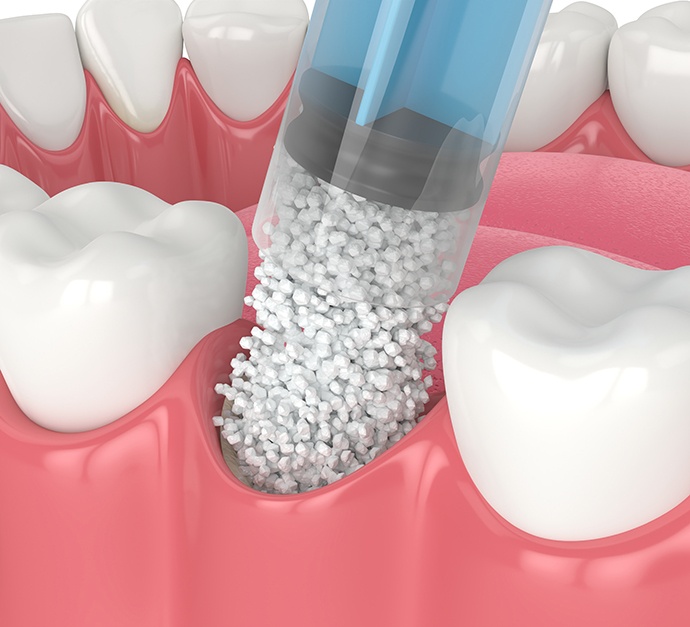Bone Grafting Richardson
Creating a Strong Base for Your Dental Implants

Some patients can get dental implants very soon after their initial consultation. In other cases, though, some preliminary treatment is necessary first. You might need to undergo bone grafting! This procedure can prepare your jaw to receive dental implants and increase your chances of enjoying a successful tooth replacement journey. What exactly is bone grafting, and what can you expect when you visit our Richardson oral surgery team for this procedure? Continue reading below to find out, or contact us directly to ask questions.
What Is Bone Grafting?

Bone grafting is a procedure that enlarges and fortifies the jawbone, thereby allowing it to serve as a strong and sturdy base for dental implants. During the procedure, we add bone material, which may be synthetic or natural, to your existing bone structure. As your body integrates the new material, you should become a more ideal candidate for dental implants.
There are different types of bone grafts, some of which involve placing bone granules, others of which might require the use of a small block of bone. In any case, this surgery is often a pivotal part of dental implant success.
Do I Need Bone Grafting?

Bone grafting is recommended in cases where the jawbone is not strong enough and/or large enough to adequately support dental implants. You might need this procedure if:
- A significant amount of time has passed since you lost your natural teeth. After your natural teeth were removed, a process known as resorption began. In other words, your body started to recycle your jawbone, causing it to lose volume and mass.
- Your jawbone is naturally small. Due to genetics, your jawbone might naturally not be large enough for dental implants.
- You have a medical condition or suffered an injury that negatively affected your jawbone. For example, a traumatic facial injury might lead to the need for a bone graft.
- You had gum disease. Advanced gum disease can cause permanent damage to the jawbone. Even if you no longer have an active infection, you may still require a bone graft.
How Does Bone Grafting Treatment Work?

During your initial dental implant consultation, our team will take some images to find out if your jawbone can support your new teeth. If you need a bone graft, we will talk to you about the procedure so you have a clear idea of what to expect. Here are some notes to keep in mind:
- You should be comfortable during your surgery; thanks to local anesthesia and sedation, there is no need to fear pain or discomfort.
- During your procedure, we will carefully expose your bone, place the graft, and then close any incisions.
- The soft tissue at your surgical site should heal relatively quickly. However, it can take a few months for a graft to fully integrate.
- Depending on the extent of your bone graft, you might be able to receive dental implants simultaneously. Otherwise, there will be a waiting period between the two procedures.
